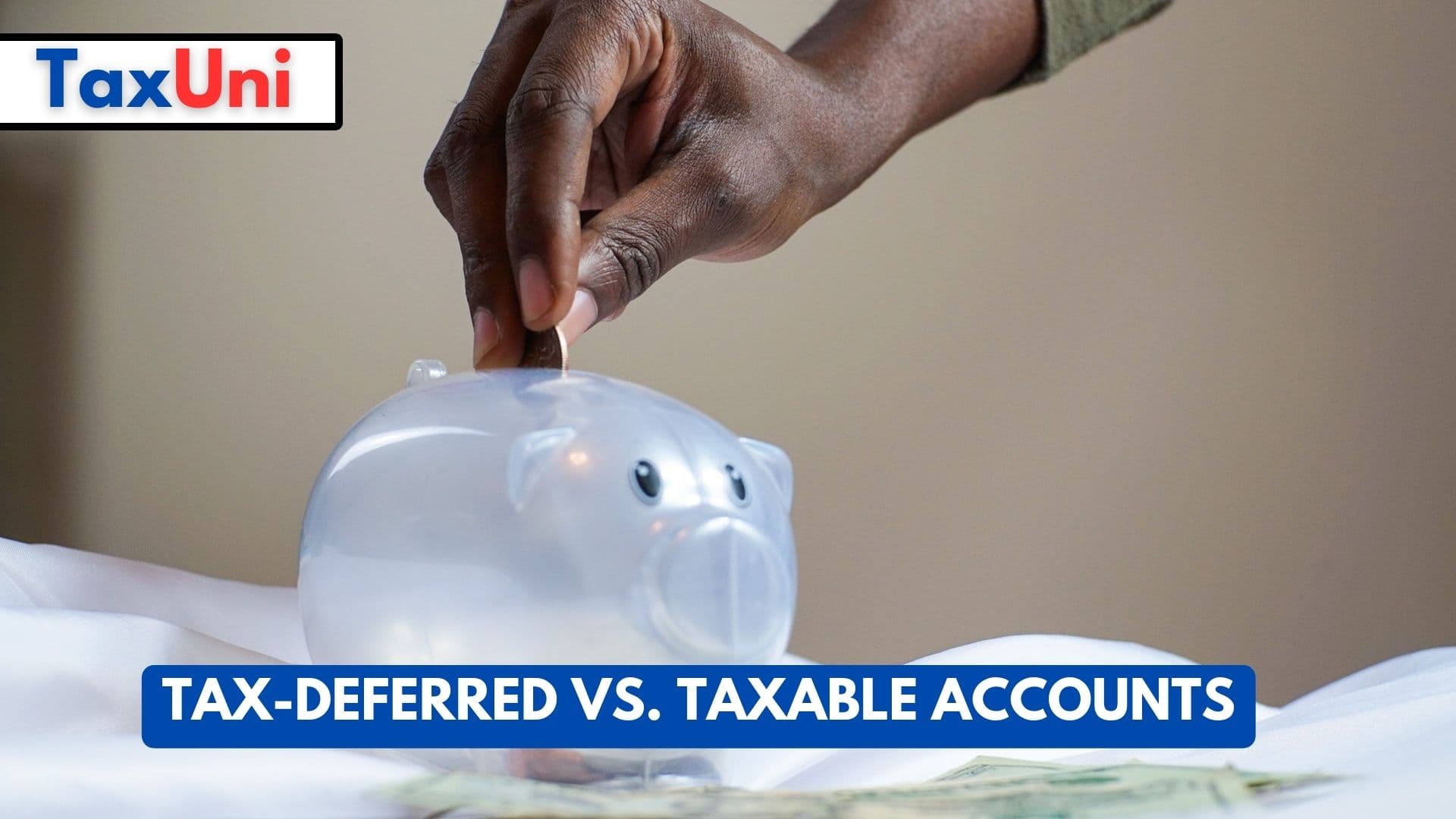Tax-Deferred Vs. Taxable Accounts
Taxable accounts such as brokerage accounts make sense for investments that lose a smaller percentage of returns to taxes, while investments that lose more of their return to taxes are better suited for tax-deferred vehicles like IRAs, Roth IRAs, and 401(k)s. A financial professional can help you decide where to hold which types of investment assets.

Contents
When it comes to investing your hard-earned money, making the right choices can significantly impact your financial future. One critical decision you’ll face is whether to invest in tax-deferred accounts or taxable accounts. Each option has its own advantages and disadvantages, and understanding the differences can help you craft a smart investment strategy tailored to your unique financial goals and circumstances.
What are Taxable Investment Accounts?
While many households save for retirement in tax-advantaged accounts like IRAs and 403(b) plans, not everyone has the opportunity to do so. Those who miss the contribution limit or those looking to invest for goals other than retirement may benefit from a taxable investment account.
A taxable account is any type of investment brokerage account that does not receive preferential tax treatment. These include traditional brokerage accounts, 401(k)s, and mutual funds. Taxable accounts generate taxable income from dividends and interest or capital gains when selling investments that have increased in value. Taxes are paid annually on these gains, though they can be deferred until withdrawal.
As a trade-off, taxable accounts offer more flexibility than tax-advantaged ones. Withdrawals from taxable accounts can be made at any time and for any reason without penalty, whereas most tax-advantaged accounts require you to wait at least five years before making a qualified withdrawal.
Liquidity is the most common reason to consider a taxable account. This is especially true if you’ve maxed out the annual contribution limits for your retirement accounts and still want to save for other goals. In addition, a taxable account can make sense when you have a preference for income (e.g., municipal bonds). These types of investments are typically taxed at a lower rate than short-term capital gains in taxable accounts.

What Are Tax-Deferred Accounts?
Tax-deferred accounts, like 401(k) plans and individual retirement accounts (IRAs), allow investors to postpone paying taxes on investment income until they withdraw funds from the account. During that time, the investments in these accounts grow tax-free, allowing them to potentially benefit from compounding interest.
The investor will be taxed on any earnings and capital gains upon withdrawal. Since most people will be in a lower tax bracket during their retirement years than they were when they made the contributions to their deferred accounts, this can reduce their overall tax liability.
In addition to avoiding immediate taxes, investments in a tax-deferred account can also avoid future taxes. Normally, when you sell an investment that has grown in value, such as mutual funds or real estate, you must pay tax on the capital gain. However, those capital gains will never be realized if the investments remain in your tax-deferred account.
Some examples of tax-deferred accounts are 401(k) plans, Traditional and Roth IRAs, and 529 plans for education expenses. Another example is a health savings account, which allows you to set aside pre-tax dollars for medical expenses and grows tax-free. This type of account works a little differently than other tax-deferred accounts, but it is an effective way to save for healthcare expenses without compromising your long-term investment goals. Whether you are looking for ways to cut your current tax bill or take advantage of tax-deferred growth, your PNC advisor can help you find the best solution for you.

Differences Between Taxable and Tax-Deferred Accounts
Most investors use taxable and tax-deferred accounts to meet savings and investment goals. The most common tax-deferred account types for retirement are traditional and Roth individual retirement accounts (IRAs) and workplace retirement plans like 401(k)s. Tax-deferred accounts let you defer paying taxes on the investment’s earnings from capital gains and dividends until you withdraw them in retirement.
While these accounts offer meaningful tax incentives, they can also limit your flexibility in retirement. For example, you may have to pay taxes on withdrawals from tax-deferred accounts if you don’t take Required Minimum Distributions (RMDs) from them.
In contrast, taxable accounts allow you to withdraw funds without a penalty at any time and pay no taxes on withdrawals as long as the money is used for qualified expenses. This type of flexibility can help you manage your short-term investments and avoid penalties if you need to access the funds for an emergency.
In addition, taxable accounts provide greater choice and growth potential. This is especially important for investors who can’t save enough in tax-advantaged accounts or want to invest beyond the IRS contribution limits of tax-deferred accounts. However, you must consider your personal investment horizon and anticipated income tax rates when deciding between taxable and tax-deferred accounts.





